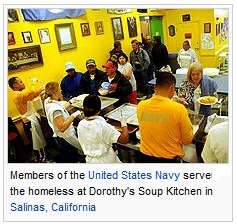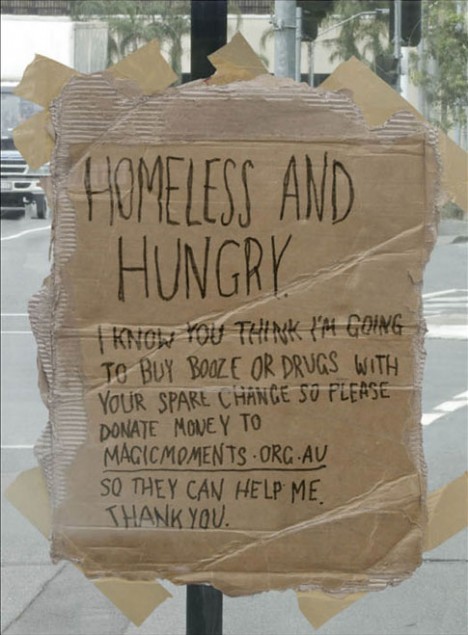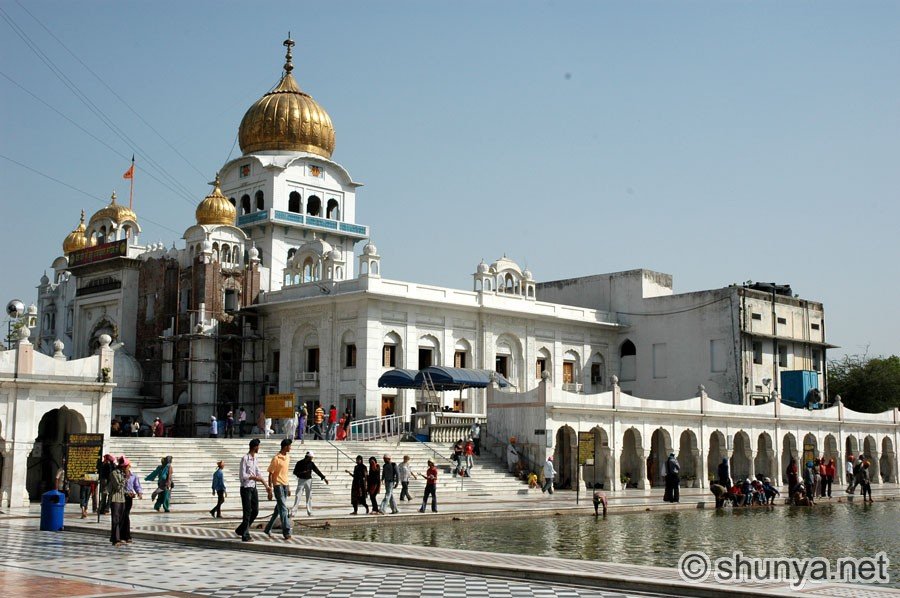With states reluctant to run adult feeding programs, this task is undertaken by religious charities. But few offer wholesome food or treat the poor with dignity.
A major life-need for urban homeless and migrant populations is of nutritious wholesome and affordable meals. But sizeable numbers among them have no home or opportunities to cook. Instead they spend around anything between a third and three quarters of what they earn each day on food bought from carts or eateries. This tends to be poor in nutrition and hygiene.
 Soup kitchens are integral to the urban landscape in many cities in the world. Yet except Tamil Nadu, no state government runs large programs for free or subsidized adult feeding. Such food would make destitute and migrant working populations healthier, and enable them to save money to fight their impoverishment. One reason why states do not invest public resources on subsidized meal programs is the assumption that this need is being attended to by private, and mainly religious, charities. We, therefore, decided to investigate religious food charities in Delhi.
Soup kitchens are integral to the urban landscape in many cities in the world. Yet except Tamil Nadu, no state government runs large programs for free or subsidized adult feeding. Such food would make destitute and migrant working populations healthier, and enable them to save money to fight their impoverishment. One reason why states do not invest public resources on subsidized meal programs is the assumption that this need is being attended to by private, and mainly religious, charities. We, therefore, decided to investigate religious food charities in Delhi.
 We found that only 4% of homeless persons depend completely on these charities for food. These are mainly destitute homeless persons, disabled and elderly men and women, and younger street children, with no occupation or income except alms. Working able-bodied homeless persons also occasionally go for charity food but only as a last resort, at times of utter economic distress, when they completely exhaust any savings to arrange for food through other means.
We found that only 4% of homeless persons depend completely on these charities for food. These are mainly destitute homeless persons, disabled and elderly men and women, and younger street children, with no occupation or income except alms. Working able-bodied homeless persons also occasionally go for charity food but only as a last resort, at times of utter economic distress, when they completely exhaust any savings to arrange for food through other means.
Feeding the hungry is deeply valued in all Indian religious traditions. But we found these traditions eroded, mutated or abandoned in shining 21st century Delhi. We were surprised to find no destitute feeding centres run by churches in Delhi. Other religious establishments ran some feeding programs, in small measure, but few catered to the real needs of the homeless, of a sustainable source of wholesome food, offered with dignity.
We were curious why such small numbers of homeless people depend on food charity, and prefer to spend their scarce resources on purchasing food, or even to remain hungry. The first answer that they gave us was that the food is served sporadically, and is not the wholesome food that they seek or need. Charity forces persons to be dependent on the timing, menu and availability of food at religious places, determined by the wishes of the donors, rather than the needs of homeless people. Waiting uncertainly for charity food curtails work hours of laboring homeless persons; many of whom are casual job-seekers, for whom reaching the job market early in the morning is imperative for getting employment for the day.
Many Hindu temples serve food, but this is usually oily, sweet and served only on fixed days. (There are fine exceptions, like the Hare Krishna temples.) The 'giver' seeks divine merit, but is not interested in serving the receiver's needs. Homeless populations develop an aversion towards this greasy, sugary food. They crave instead for simple and easily digestible food.
But the most important reason why homeless people and migrants reject food charities is that these assault their dignity and self-hood. They are compelled to jostle with outstretched cupped palms, and eat what they get squatting on a pavement or under a tree. Often they are forced to be pitted against each other in an effort to access the limited food that is served, and the old and infirm invariably fall by the wayside.
We found dignified forms of charity in the Nizamuddin Dargah and the Sai Baba Temple. Here food tokens are purchased by donors from hotels, with a validity of a month, and distributed to the destitute. A person can later exchange these coupons when hungry and in need at the eatery, and is served food worth the cost of the coupon. Less dignified, in Jama Masjid, we found many people seeking food charity patiently seated on their haunches outside dhabas which line the mosque, waiting for persons who pay the dhaba owner for the number of people they want to feed.
 Traditionally, the most wholesome food served with greatest dignity has been in the langars in Sikh gurudwaras. People are seated together on mats laid out on the floor in single lines, and food is served in this dining space in unlimited quantities. The langar is at the heart of Sikh egalitarian teachings, in which an emperor and a beggar are mandated to be seated side by side and offered the same food, with the same respect.
Traditionally, the most wholesome food served with greatest dignity has been in the langars in Sikh gurudwaras. People are seated together on mats laid out on the floor in single lines, and food is served in this dining space in unlimited quantities. The langar is at the heart of Sikh egalitarian teachings, in which an emperor and a beggar are mandated to be seated side by side and offered the same food, with the same respect.
However, we found that these egalitarian traditions abandoned in the capital's main gurudwaras. Gurudwara Sis Ganj Sahib in Chandni Chowk, at the centre of the largest concentration of homeless people, actively bars the 'dirty poor' from entering the langar. Bangla Saheb, near Connaught Place, also blocks them from entering the temple and eating at the main langar, but it has a separate langar for them at the rear, outside the temple precincts, serving the same food but without the same respect. We enquired from the managers about this departure from the core of Sikh teachings, and they justified it by claiming that the homeless defile the temple, because they smoke and drink.
This investigation into religious food charities in Delhi became a fascinating journey, not just into the survival strategies of Delhi's poorest, but the shrinking spaces in the hearts of India's middle class.
Harsh Mander is a member of the National Advisory Council. The views expressed by the author are personal.
